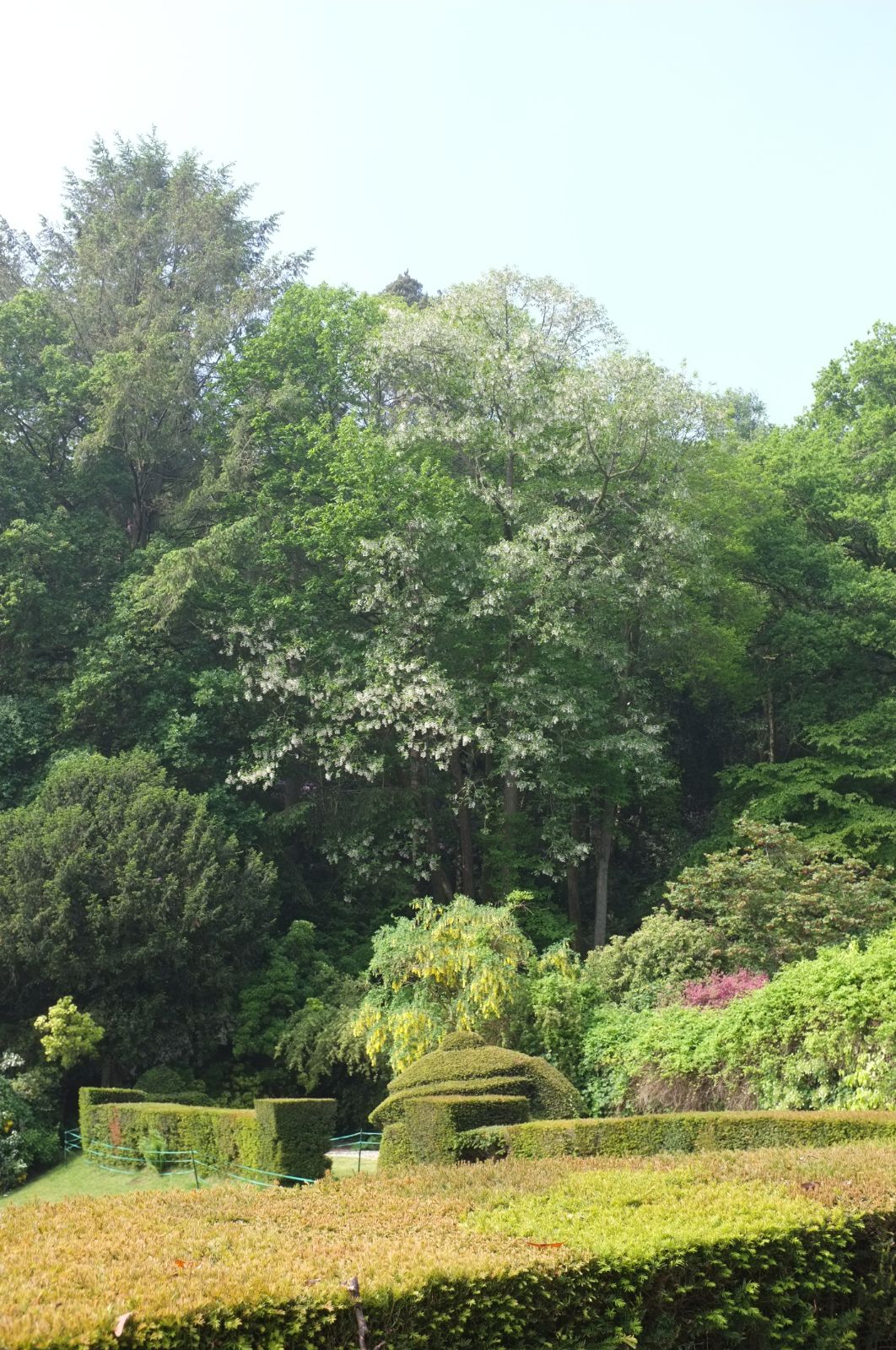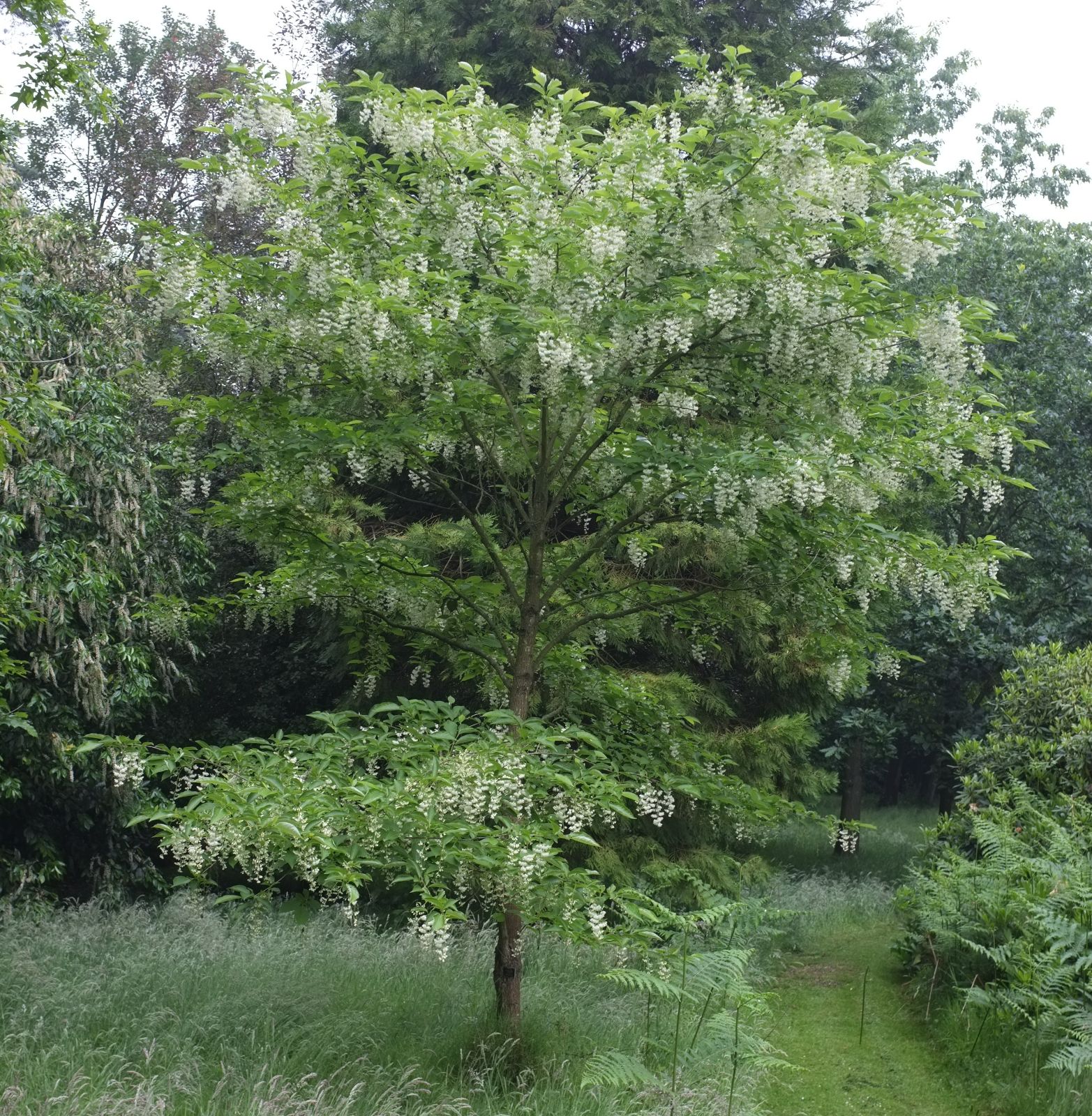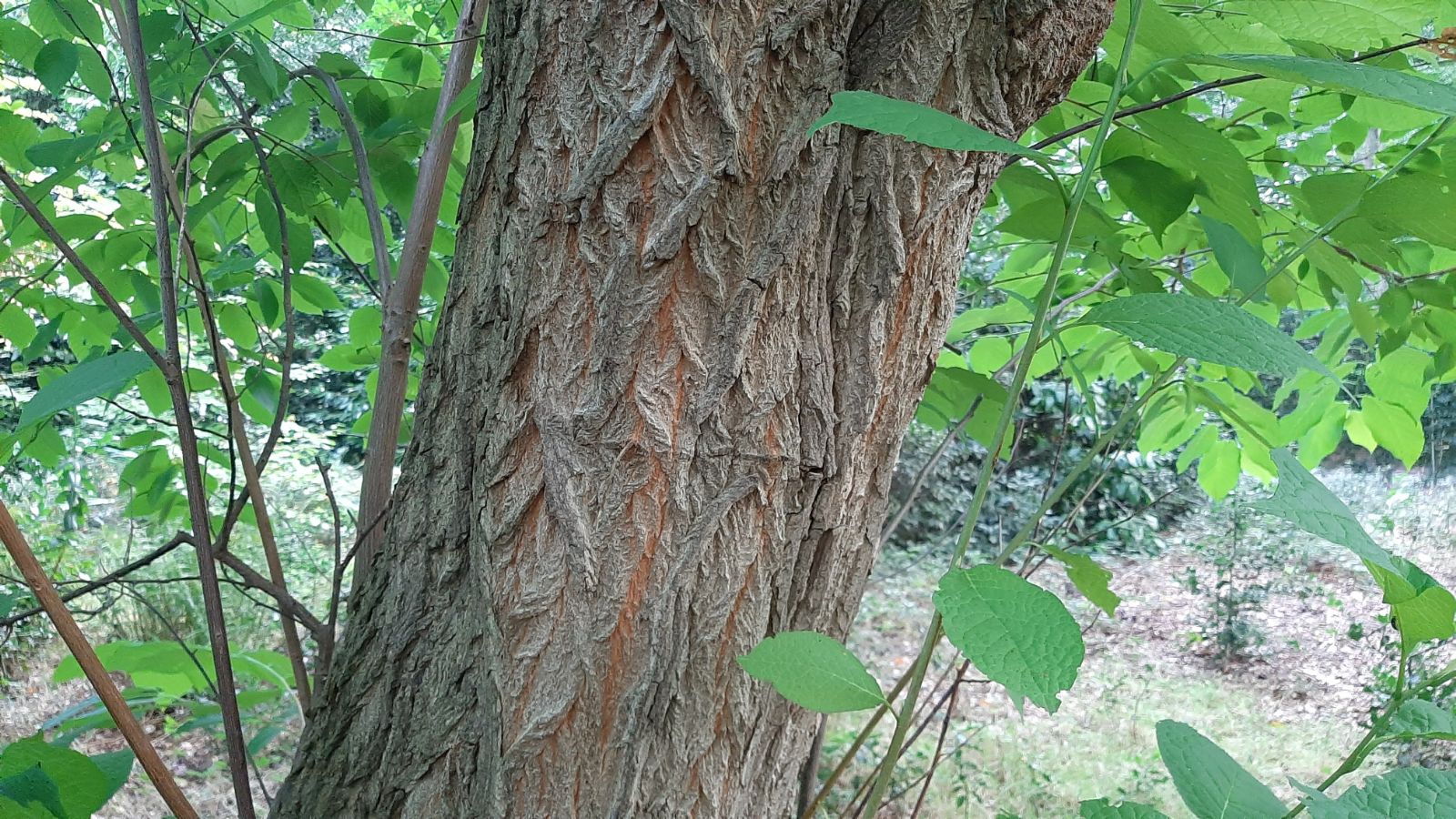Pterostyrax hispidus
Sponsor
Kindly sponsored by
Arabella Lennox-Boyd
Credits
Alan Elliott (2017)
Recommended citation
Elliott, A. (2017), 'Pterostyrax hispidus' from the website Trees and Shrubs Online (treesandshrubsonline.
Genus
Common Names
- The Epaulette Tree
- The Fragrant Epaulette Tree
Synonyms
- Halesia hispida (Sieb. & Zucc.) Mast.
- Decavenia hispida (Sieb. & Zucc.) Koidz.
- Decavenia japonica Koidz.
- Decavenia micrantha (Sieb. & Zucc.) Koidz.
- Pterostyrax micranthus Sieb. & Zucc.
Tree to 9–11(–25) m, multi-stemmed shrub to 7m. Bark grey-brown, fine scaly interwoven ridges. Branchlets initially yellowish-brown glabrous, becoming silvery-brown with age. Leaves papery, 8–6 × 5–11cm, elliptic to obovate-elliptic, upper glabrous except veins sparsely stellate hairy, lower surface densely tomentose stellate hairy, spreading hairs on midrib and veins, seven to ten secondary veins on each side of the midrib, margins shallowly deticulate, teeth terminate with gland, apex abruptly acute; petiole 0.7–2 cm long. Inflorescences terminal, or lateral on current year’s shoots, paniculate, 13–26 cm long; pedicels to 0.2 mm long. Flowers 0.5–1 cm long; calyx densely white tomentose, corolla lobes deltoid, densely white tomentose, to 1 cm long, stamens longer than corolla, filaments long soft hairs on lower half. Drupe spindle-shaped, to 1 cm long, 10–ribbed, densely stellate tomentose and with yellow spreading hairs. (Hwang & Grimes 1996; Ohwi 1965).
Distribution Japan Honshu, Sikiku, and N. Kyushu
Habitat Deciduous forests; 500–1400 m asl.
USDA Hardiness Zone 5a-8a
RHS Hardiness Rating H5
Awards AGM
Taxonomic note In cultivation in the UK Pterostyrax hispidus has historically included P. psilophyllus. These species have a number of morphological characteristics to distinguish them as well as disjunct natural ranges; furthermore P. hispidus is endemic to Japan while P. psilophyllus is from Western China. With the historic taxonomic confusion between these two species it might well be that some specimens of Pterostyrax hispidus in cultivation are erroneously named and might be P. psilophyllus.
This is another species in the Styrax family that should be more widely cultivated. This Pterostyrax species, as the common name suggests, is scented with a pleasant lemony citrus fragrance from an abundance of flowers. In autumn and winter there is additional interest from the persistent, hairy fruits.
This species has been in cultivation since the late 19th century. Previous editions (e.g. Bean 1981a), stated that this species was introduced into cultivation in 1875, however this was actually the first recorded flowering in cultivation, (Carriere 1875), the plants had been imported several years earlier from Japan. The species flowered in late May 1875 in the nurseries of Messieurs Thibault & Keteleer, at Sceaux and the Museum and Botanic Garden in Paris.
Most specimens in cultivation reach somewhere in the region of about 10m in height. There is however a truely remarkable specimen at Borden Wood House, West Sussex, with recorded heights of more than 25 m (Johnson 2003), outstripping any recorded native specimens in terms of size. It is interesting to note that while some specimen plants maintain a single trunk they will generally begin to sucker from the base.
Pterostyrax hispidus was awarded an AGM in 1993.



